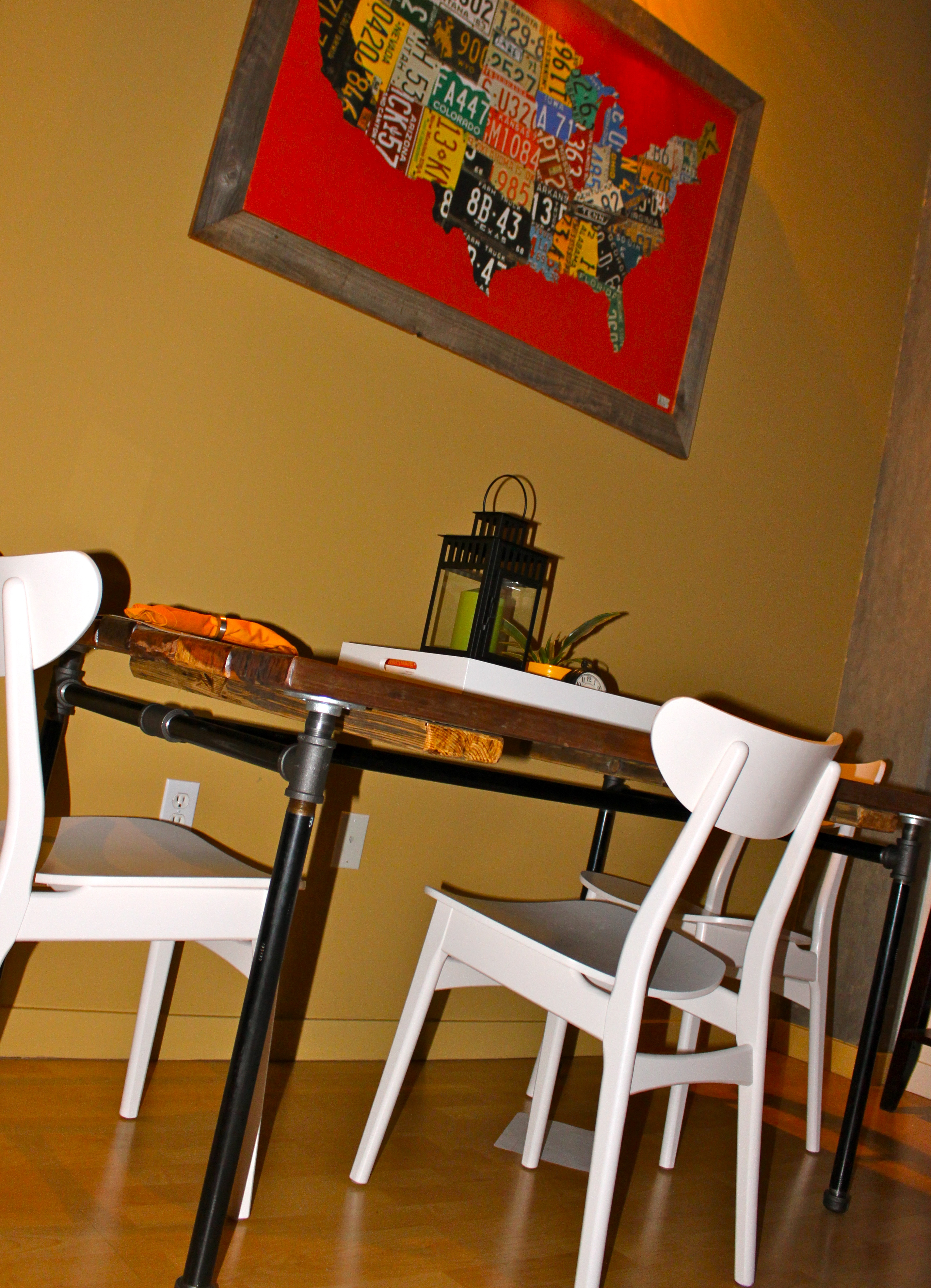Farewell West Elm Table – Hello DIY Project!
After moving into our SF loft, I was on the hunt for a new kitchen/dining table as our previous table was a hand me down that I wasn’t in love with. I wanted something that was a mix between modern and contemporary, that fit in our place, and that would last beyond the current setup. After searching around, I decided to go with the West Elm angled leg expandable table.

I loved the lines of this table and it had a hidden leaf (no need for storage!) that transformed it from a 4 person to a 6 person setup. Except…once we got the table in our place and put it to use, even after using placemats and being extra careful, we found that it scratched SUPER easy. After just one month it already looked like it had considerable wear and tear. BUMMER. We returned the table and I immediately began looking into new options. I scoured Craiglist, Etsy and checked blogs for inspiration. I decided I wanted to go with a rustic/industrial look that wouldn’t matter if it got scratched because that’s-what-it’s-supposed-to-look-like. Pottery Barn and Restoration Hardware had some great options that fit my mold, but definitely not my budget. That’s when I decided to put my creative hat on. I found a local craftsman in the bay area that builds furniture out of salvaged wood who agreed to build me a tabletop at an amazing price. All I had to do was provide him with dimensions and some pictures I’d found online of what I had in mind. I also found this great tutorial at frugalfarmhousedesign.blogspot for a table that used pipes as the base and decided to use that at my starting point.
The tabletop turned out better than imagined and after lots of measuring, mapping out how everything would fit together, and a couple trips to Home Depot, we now have a new, one of a kind, custom table that I don’t have to worry about scratching or dinging because that’s-what-it’s-supposed-to-look-like.
 The materials: 1″ black pipes custom cut, stainless steel flanges, 1″ tees, 2″ fillers, 1″ pipe caps.
The materials: 1″ black pipes custom cut, stainless steel flanges, 1″ tees, 2″ fillers, 1″ pipe caps.
 Fits together like a puzzle. The tricky part was making sure everything was tight and didn’t wobble.
Fits together like a puzzle. The tricky part was making sure everything was tight and didn’t wobble.
 We drilled the base to the table top (which is 60″x36″) using wood screws through the flange holes.
We drilled the base to the table top (which is 60″x36″) using wood screws through the flange holes.

 Ta-dah! Our new table!!
Ta-dah! Our new table!!